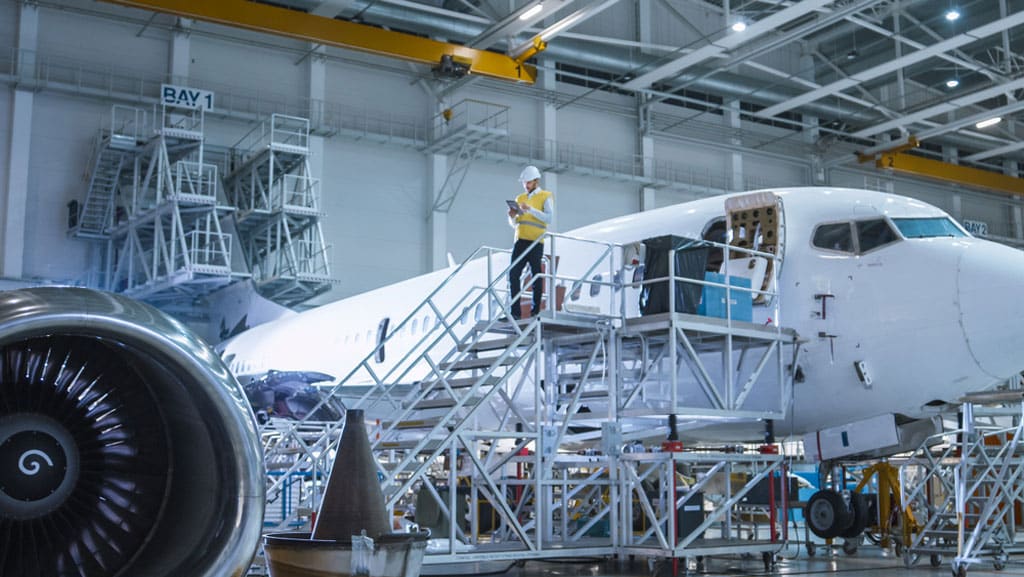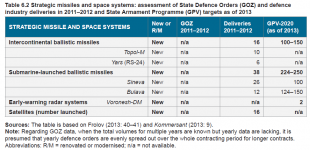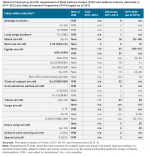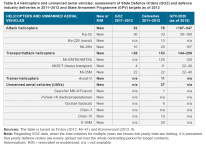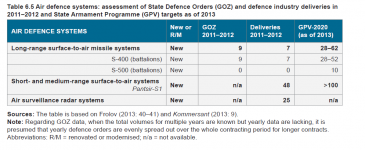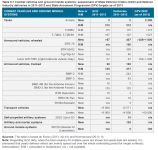From the above two comments I think you can excuse me for getting the impression that you were both envisioning Canada being able to field (and presumably support in the field) a 3 Division Force.
I'll just say that in light of the current economic situation and with major defence spending like the just announced NORAD upgrades, the shipbuilding program, F-35's and basic critical equipment needs highlighted by the events in Ukraine on the books, that in my humble opinion any CDS or MND that walked in to the PMO and suggested that we go from an Army that has no plans to even deploy a single Brigade Group to any army that wants to be able to deploy a 3 Division force (regardless of the ratio of Reg Force to Reserves) would be laughed out of the office.
If you are suggesting that we have an Army that is the equivalent of 3 Divisions with the objective of being able to deploy, support and maintain a single Division in the field then I will agree with you that this is an objective that a country the size and wealth of Canada should be able to achieve. I will however suggest that this is an aspirational goal that falls (very) far outside any discussions of a Force 2025/2030/2035 timeframe.
There are already a lot of major defence programs in process which will eat up much of the effort and funding available to the CAF that will have to work their way through the system before the absolutely transformative changes that would be required to achieve a Division-sized field force can become a reality. Retention issues, basing issues, equipment issues, training issues, Reserve TOS issues, legislative issues, doctrinal issues, etc. all together will likely be a decades long battle in order to lay the foundation for what you are proposing. That's not to say that we shouldn't start down that road now, but it does to my mind mean that we need a more achievable interim plan.
2% GDP and major administrative reform are an excellent start but I'd argue that probably at least a decade of that level of funding will be required just to fix what we have (and complete our current projects) before it can start to be directed into major transformation programs.
I'd make a couple of comments about the
RAND report. Firstly, their wargaming pits the entire forces of the Russian Western Military District and their forces in Kaliningrad (which runs from Ukraine in the South to the coast of Norway in the North) against the in-place NATO forces in the Baltic States. So, are we to seriously expect that Russia would leave the rest of their entire Western frontier undefended while they focus all of their military forces against a single point on the NATO front? Of course not.
In order to invade the Baltic States Russia would have to move and concentrate their forces for the attack as well as move up reinforcements from other military districts to cover the rest of their front against the likely counter-attacks by NATO. These movements and preparations for war would certainly be noticed by NATO.
NATO first noticed an increase in Russian forces massing near Ukraine and conducting increased tempo of training exercises in the Spring of 2021. By November 2021 the US publicly released commercial satellite images showing the continuing build-up of Russian forces (they certainly would have been aware of this well before the information was released publicly). January 24th NATO put their forces on standby and began reinforcing Europe with additional ships and aircraft. In February the US deployed additional troops to Poland and Romania and warned Russia of impending economic sanctions should they invade.
I don't think that there is any reason to believe that the signs of a Russian build-up in preparation for an invasion of NATO would not also be detected in advance. Especially in light of what has happened in Ukraine I'd suggest that both NATO will be extra vigilant in watching for any future signs of Russian military preparations and that Russia will not want to risk the manpower issues that it faced in Ukraine by not ordering a general mobilization of Reserves in advance of a war against NATO.
This should trigger a build-up of NATO forces from both Europe and North America. Yes I think that deploying a Brigade is something that Canada should have as a policy, maintain the capability to do and regularly practice. I've also stated before that I'm not opposed to Canada pre-deploying some equipment for a fly-over force in Europe although I've seen no signs that any Canadian political party is in favour of doing that.
As to your comment that Article 5 is irrelevant to the Baltic States because "Once the Russians cross the border it's too late" I simply disagree with that. Setting aside the fact that a reinforced NATO presence in the Baltics resulting from detection of signs of the Russian build up may firstly deter Russia from going through with the attack or that the beefed up defending forces may stop or significantly slow any Russian attack, an invasion by Russia would cause the death of not only Latvian, Estonian and Lithuanian NATO personnel, it would also result in the deaths of American, British, Danish, French, Canadian, Albanian, Czech, Italian, Montenegran, Polish, Slovakian, Slovenian, Spanish, Belgian, Icelandic, Luxembourgian, Dutch, German, Norwegian, Croatian and Romanian NATO troops.
I don't believe that NATO in the face of that kind of aggression and loss of life would simply allow Russia a fait accompli with whatever gains they made.
The comment about supplying arms and cash was in relation to Russian aggression against non-NATO members. It is related to the (obvious) fact that so far NATO is unwilling to directly intervene in the defence of non-alliance members. Augmenting our eFP Battlegroup in Latvia will have ZERO deterrent effect on Russia's actions in Ukraine (or any other non-NATO country they choose to invade) unless the policy of NATO changes and direct military intervention is approved. This isn't just a case of Canadian political ineptitude, it's a pan-NATO policy decision.
What makes our "Medium" forces "Medium"? The LAV 6.0 is 28,636kg. The Bradley M2A2 is 27,220kg. We're certainly not "Medium" in terms of deployability. We're "Medium" I guess in that we're missing a bunch of the puzzle pieces that allow us to engage in a peer "Heavy" conflict, but is there some type of "Medium" role that a 28,636kg LAV can perform that a 27,220kg Bradley can't perform?
It's probably time to take the term "Medium" out of our vocabulary. Realistically the only time we'd ever deploy a full Brigade on operations (or a full Division in our wet dreams) would be for a major peer/near-peer conflict. And for that we either need Light forces (because we need to respond more quickly than we are able to deploy our Heavy forces) or we need Heavy forces.
If we simply bought some more tanks we'd have what we need for 3 x Heavy Brigades each with 1 x Tank Regiment and 2 x LAV Battalions. That would be enough Heavy forces to deploy and maintain through rotation 1 x Heavy Brigade in the field. That also leaves us with 3 x Light Battalions which could be grouped together into a single Light Brigade with a single Battlegroup available on rotation as a Rapid Response force.
If we're lucky, GDLS will be selected as the winner of the
Optionally Manned Fighting Vehicle competition for the US Army and we can begin replacing the LAVs in our Reg Force Battalions with domestically produced
Griffin III IFVs. By that time (if we're lucky) we'll have some of our Reserve structure/training/legislation issues worked out and we can start devolving the LAVs down to the Reserves and begin building up the Divisional structure you and
@KevinB have been proposing.
I won't argue that this is one possible contribution to NATO that we can make, but it really is focused primarily on a single threat (Russian invasion of NATO) which for several reasons I don't feel is likely (not impossible, but in my opinion highly unlikely).
For example, Light forces equipped with AD and ASuW missiles could be deployed along the Norwegian coast or in the Baltic Islands or on Svalbard, etc. to block Russian naval/amphibious forces from deploying in support of a land invasion. These same types of forces would also be useful in the Pacific theater, the Persian Gulf, Gulf of Aden or elsewhere in the World.
Replacing our Aurora's with an equal number (or even greater number) of P-8s would also be useful not just against Russian naval threats but Worldwide against all types of military and non-state threats.
Building small combatants like Corvette's to replace our Kingston-class would allow us to better contribute to naval conflicts, enforce sanctions/blockades, anti-piracy and contraband smuggling, etc.
Bigger stretch here, but what if we were to actually get the mythical "Big Honking Ship"? What kind of capabilities for example would a Canadian
Juan Carlos-class LPD give Canada? Carries 913 troops and up to 46 MBTs. In a pure combat role it can carry 25 x F-35Bs or in a pure transport role can carry 25 x NH90 class helicopters (or FVL?).
Any of these capabilities combined with a continued eFP Latvia rotation, a Rapid Deployment Light Battlegroup and a single ABCT available to be sustainably deployed when required might be just as valuable to NATO as a single fly-over Division and be much more flexible for Canada in contributing to allied military operations around the World and not just in a single theatre.
